
Several years ago I blogged about peg loom weaving. This may not seem obviously outdoorsy but it is. The looms are simple to use and any long strands can be woven through the pegs including plastic bags, long grasses, plant stems and gathered wool. The looms are very portable and can be taken outside and used in situ.
It is also possible to make portable outdoor seats very quickly and easily using washed fleece. Including the time to thread the loom, each 14 peg seat takes less than an hour to make. Naturally children will take longer. I also like the simplicity of the loom. Little children can learn to use them so they are much more of a doable project than felting seats.
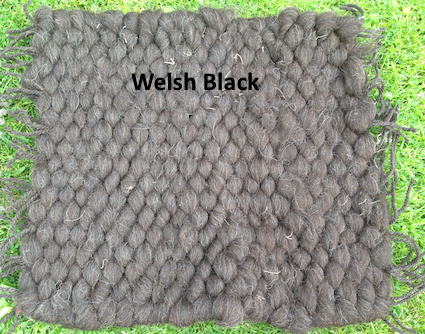
I’ve been experimenting over the years with heritage breeds. All of them have worked really well. In the photo above, the wool has been carded by machine. The overall result is a very clean and defined pattern to the weaving.

The difference can even be seen in fleece from the same breed. The humbug fleece below must have come from a Jacob sheep with black and white markings.

The beauty of peg loom weaving is that unlike spinning and felting, special types of fleece are not needed. Any breed of sheep will do. All you have to do is pull off strips of fleece and get weaving.
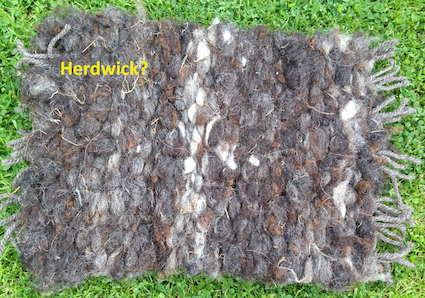
The uncarded fleece produces a much more rough and ready seat. But these are still very attractive in their own right. You get a better feel for the qualities of the fleece and the differences between the breads.
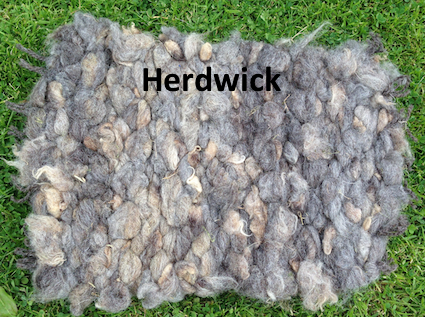
The peg loom seats are quite thick so they provide great insulation in cold weather. The mats stack nicely on top of each other too and can sit in the corner of a den ready for children to help themselves.

By using a variety of breeds, you can see, feel and smell the differences between the fleeces. Some are fluffy and dense like the Suffolk above. Others are hardwearing tough fleeces like the Swaledale which can be commonly found in the Lake District.
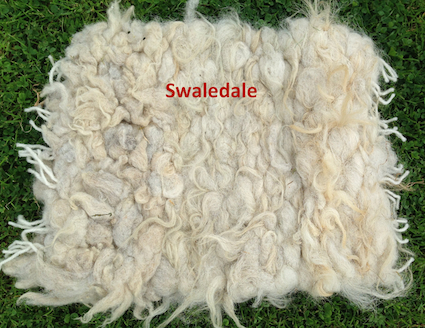
My aim over the next few years is to continue to create peg loom seats from many more breeds. I can’t wait to use some beautiful curly Blue-face Leicester. What I want is for the seat to be a talking point for the children who use them.
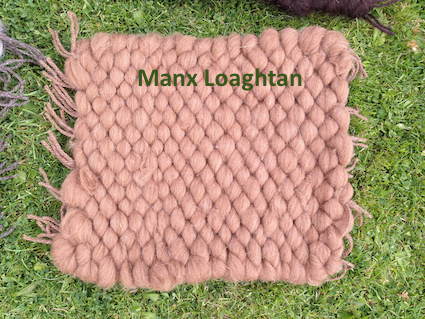
It will be a springboard into learning about the value of heritage breeds, conversations about genetic diversity and why we need different breeds of sheep. For example, in addition to producing wool for different products, the way in which sheep crops grass as it eats can aid conservation and be part of the management plans for wildflower meadows and other habitats. The Scottish Wildlife Trust have a flying flock of sheep which graze grass levels to different heights. The Rare Breeds Survival Trust has lots of valuable information for classes undertaking a farming project. RHET have resources about sheep and wool, as does The Countryside Classroom.
This blog post was originally published in August 2014.





























